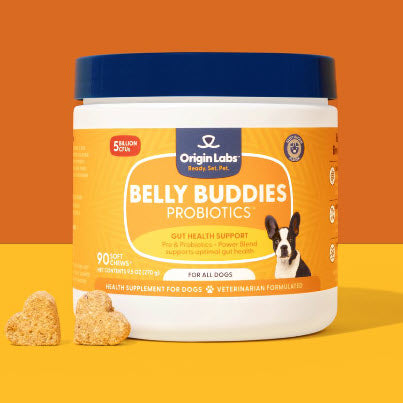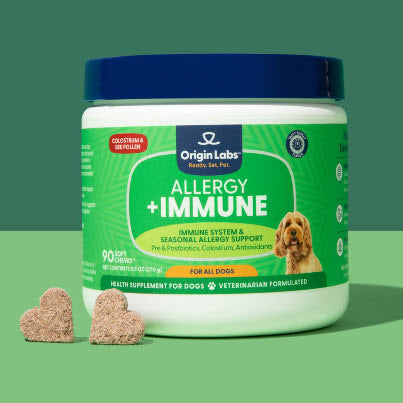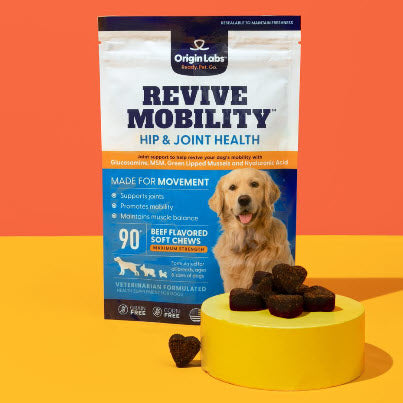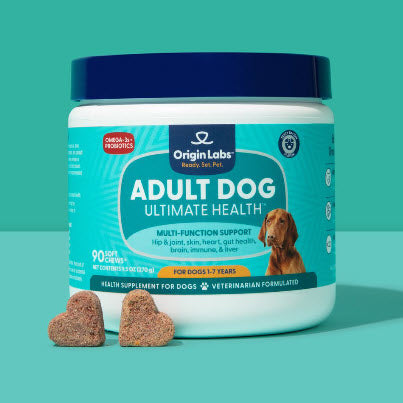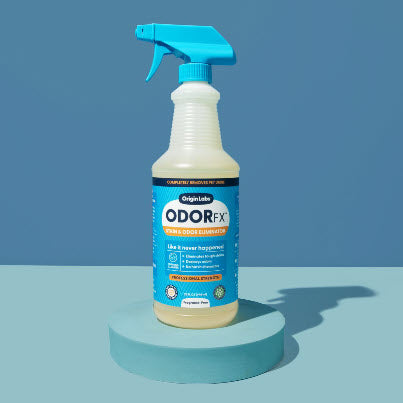Introduction
Similar to humans, dogs also need a balanced diet to uphold their vitality and health. To meet their nutritional needs and support their energy levels, dogs can benefit from a variety of food options. Among these, chicken is an especially advantageous choice. Not only does it provide high-quality protein that aids in muscle development and repair, but it also offers dogs a rich source of omega 6 fatty acids, essential amino acids, and glucosamine—all crucial elements for their well-being. Understanding how to boil chicken for dogs is vital as this cooking method allows these nutrients to be easily digestible for your pet.
Here are the key benefits of chicken for dogs:
- Protein: Serves as the building block of muscles and aids in the repair of tissues.
- Omega 6 fatty acids: Contribute to healthy skin and coat.
- Essential amino acids: Play a crucial role in numerous metabolic processes.
- Glucosamine: Supports joint health and mobility.
Boiling chicken is a favored method for preparing this nutrient-rich food for canines. This technique offers several advantages:
- Enhances digestibility, making it easier for dogs to absorb these vital nutrients.
- Significantly reduces the risk of bacterial contamination like salmonella, which is crucial when handling poultry.
- Preserves more nutrients compared to frying or grilling, ensuring your dog gets the most out of their meal.
Learning how to boil chicken for dogs properly can be a simple yet effective way to enrich their diet and care for their well-being.
Is Chicken Safe and Healthy for Dogs?
When it comes to canine nutrition, a question that frequently arises is: can dogs eat raw chicken? The debate around feeding raw chicken to dogs centers on the risk of bacterial infections such as salmonella, which can be harmful to both pets and their owners. Due to this risk, many veterinarians and pet nutrition experts recommend against offering raw chicken to dogs.
Cooked Chicken: A Safer Alternative
The consensus among professionals is that cooked chicken, devoid of bones and skin, is a much safer choice for canine consumption. When prepared without harmful additives or seasoning, cooked chicken can be a nutritious part of a dog's diet.
Here are key points outlining why is chicken healthy for dogs:
- High-Quality Protein Source: Chicken provides high-quality protein, which is essential for muscle development and repair in dogs.
- Essential Nutrients: It contains important nutrients like omega 6 fatty acids, which promote healthy skin and a shiny coat.
- Glucosamine: Found naturally in chicken, glucosamine supports joint health and mobility.
- Digestibility: Cooked chicken is generally easier for dogs to digest compared to some other protein sources.
While chicken offers numerous health benefits, moderation is key. Overfeeding can lead to obesity or unbalanced nutrition if not integrated properly into the dog's regular diet. Hence, it's wise to consider boiled chicken as one component of a well-rounded meal plan for your pet.
In terms of safe chicken for dogs to eat, boneless and skinless cuts are preferable. Bones pose a choking hazard and can splinter, causing internal damage or blockages. Similarly, skins are usually high in fats that could upset your dog’s stomach or contribute to weight gain.
By focusing on properly prepared cooked chicken, owners can ensure their dogs reap the nutritional benefits while minimizing potential health risks. Moving forward, understanding the best practices in preparing boiled chicken will further ensure its safety and maximize its advantages as part of a dog’s regular diet.
Cooking Chicken for Dogs: Boiling Method
Understanding how to boil chicken for dogs is important for all pet owners, as it's a fundamental part of adding this nutritious protein source to your dog's diet. It’s not just about tossing a piece of chicken into boiling water; there are certain steps and precautions that need to be taken to ensure the chicken is safe, healthy, and tasty for your furry friend.
Boiling chicken retains more nutrients compared to other high-heat cooking methods such as grilling or roasting. This guarantees your dog gets the most out of their meal. The key is to keep the chicken submerged in water throughout the entire cooking process, thus locking in essential vitamins and minerals.
However, before you start boiling, boneless and skinless chicken needs to be prepared. The skin can be fatty, leading to potential health issues like pancreatitis. Bones, on the other hand, pose a choking hazard and could splinter inside your dog's digestive system.
Here's a step-by-step guide on how to cook chicken for dogs using the boiling method:
- Choose the Right Chicken: Opt for boneless, skinless chicken breast or thighs as they are leaner options.
- Prep Your Pot: Place the chicken in a large pot. Ensure there's enough room for water without overflowing.
- Cover with Water: Pour cold water into the pot until it fully covers the chicken pieces.
- Start Boiling: Turn the heat up and bring the water to a boil.
- Cook Thoroughly: Once it starts boiling, reduce heat and let it simmer for about 12 minutes.
- Check Doneness: Use a food thermometer (165°F is safe) or cut into the thickest part of a piece to check if it’s fully cooked - there should be no pink spots left.
- Cool Down: After cooking, let the chicken cool down before chopping it into bite-sized pieces for your dog.
Remember, this method is about simplicity and health. Avoid adding any seasonings or oils that could upset your dog's stomach or add unnecessary calories.
Cooking chicken through boiling is a straightforward, nutrient-preserving method that can be easily incorporated into your pet care routine.
Ensuring Food Hygiene when Boiling Chicken for Dogs
Food hygiene is crucial in preventing foodborne illness in both humans and animals, including our furry friends. When it comes to preparing chicken for your dog, it's important to remember that safety starts long before the cooking process begins.
Here are some essential steps to follow to ensure food hygiene when boiling chicken for dogs:
1. Safe Handling
Always start by washing your hands thoroughly before and after handling raw chicken. This simple act can help prevent the spread of bacteria. Additionally, use separate utensils and cutting boards for raw meat to avoid cross-contamination with other foods.
2. Storage
Proper storage of raw chicken is key to preventing bacterial growth. Keep raw chicken at the bottom of the refrigerator to prevent any juices from dripping onto other foods. If you don't plan on cooking the chicken within a couple of days, it's best to freeze it.
3. Preparation
Before boiling chicken for your dog, take a few moments to prepare it properly:
- Remove bones and skin: Both bones and skin can pose choking hazards or cause digestive issues for dogs.
- Avoid harmful ingredients: Steer clear of seasonings or ingredients that are toxic to dogs, such as onions or garlic.
These simple steps can go a long way in ensuring the safety of your dog's meal.
The risk of salmonella infection is a concern when dealing with poultry. Dogs can contract salmonella through contaminated chicken, leading to symptoms such as vomiting, diarrhea, and lethargy. While dogs are generally more resistant to bacteria than humans, they are still susceptible to these harmful pathogens.
4. Thorough Cooking
To eliminate any potential bacteria, including salmonella, make sure to cook the chicken thoroughly. The recommended internal temperature for cooked chicken is 165°F (74°C). Using a meat thermometer can help you check the temperature at the thickest part of the meat.
5. Cooling Down
After boiling the chicken, allow it to cool down before serving it to your dog. This not only reduces the risk of burns but also makes the chicken more enjoyable for your furry friend.
By following these food hygiene practices when preparing chicken for your dog, you're taking an important step towards keeping them safe and healthy.
Addressing Dog Allergies and Sensitivities
While chicken is generally safe for dogs, it's important to note that some canines might exhibit allergic reactions or sensitivities. Dog food allergies are a common concern for pet owners, and even foods like chicken, which are usually hypoallergenic, can trigger adverse reactions in some cases.
Typical signs of food allergies include skin irritation, excessive scratching, ear infections, and digestive issues such as diarrhea or vomiting. If your dog displays any of these symptoms after eating chicken, it's advisable to seek veterinary advice immediately. It's also essential to remember that each dog is unique; what works well for one might not be suitable for another.
For dogs with known food sensitivities or allergies, implementing a hypoallergenic diet for dogs is often recommended. This diet excludes potential allergens and focuses on easily digestible foods. Boiled chicken can be a part of this diet if your dog isn't allergic to it.
Incorporating boiled chicken into a hypoallergenic diet involves careful planning:
- Start by introducing small amounts of boiled chicken into your dog's existing diet.
- Monitor your dog closely for any adverse reactions.
- If no adverse reactions occur within 48 hours, gradually increase the amount of boiled chicken in the meal.
- Always ensure the rest of your dog's meal is balanced with other essential nutrients.
Remember, moderation is crucial when adding new ingredients to your dog’s diet.
Chicken isn't just a source of protein; it also provides essential nutrients like omega 6 fatty acids and glucosamine. However, these benefits should never come at the expense of your pet's comfort or health. As such, dog nutrition should always remain a priority while considering dietary changes.
Other Uses of Boiled Chicken for Dogs
Boiled chicken isn't just a high-quality protein source for your dogs; it's also a versatile ingredient that you can use in various ways to support your pet's health and wellness. Its applications range from serving as a delicious treat to being an integral part of diet management.
1. Boiled Chicken as a Wholesome Treat:
Boiled chicken can be transformed into bite-sized pieces that serve as healthy, tasty treats for your dog.
- Cut the cooled boiled chicken into small chunks that are easy for your dog to consume.
- To make an even more appealing treat, mix these small pieces with some cooked rice or pumpkin. This combination not only tantalizes their taste buds but also provides additional nutrients.
2. Bland Diet Solution for Digestive Issues:
When your dog suffers from digestive upsets, a bland diet of boiled chicken and white rice can soothe their stomach.
- Combine the boiled chicken with white rice in a 1:2 ratio to create a bland but nutritious meal.
- Serve this mixture in small, frequent portions until your dog's digestive system returns to normal.
3. Main Ingredient in Homemade Dog Food:
If you prefer preparing homemade meals for your dog, boiled chicken can be an essential ingredient.
- Shred the boiled chicken and combine it with vegetables such as carrots and peas to form a balanced meal.
- You can also incorporate it into homemade meatloaf or patties, ensuring you tailor the recipe to meet your dog's nutritional needs.
4. High-Value Rewards for Training:
Boiled chicken is not just food; it can also be an effective training tool.
- Use small pieces of boiled chicken as high-value rewards during training sessions. This encourages good behavior and keeps them engaged.
- To maintain interest, alternate between their regular kibble and pieces of chicken when rewarding them.
Boiled chicken's appeal and health benefits make it a fantastic addition to your dog's diet. Whether used judiciously as part of their regular meals or as an occasional treat, its applications are numerous. Pet owners have discovered that incorporating boiled chicken into their dog's diet can assist with everything from recovery from illness through a bland diet to successful training via positive reinforcement.
By understanding how to effectively use boiled chicken in different scenarios, you can enhance your pet's dietary experience without sacrificing nutrition or enjoyment.
Conclusion
Prioritizing your dog's nutritional needs is crucial for their overall health and well-being. Boiled chicken can be a beneficial part of a balanced diet for your dog, thanks to its high-quality protein and essential nutrients. However, it's important to make sure that any changes in their diet, like adding boiled chicken, are suitable for their specific nutritional needs.
The best way to get personalized advice and guidance is by consulting with a veterinarian. They can give you valuable information on how boiled chicken can fit into your dog's diet and help you determine the right serving sizes. Remember, every dog is different, and what works for one may not work for another.
The tips and advice in this guide are designed to help you prepare a safe and nutritious meal or treat using boiled chicken for your dog. Boiling the chicken is a simple cooking method that helps retain its nutrients while ensuring that it's safe to eat.
Adding boiled chicken to your dog's diet can be more than just giving them food; it's about enhancing their meals with a versatile and easily digestible source of nutrition that supports their active lifestyle. When done correctly, it can be a great addition to your furry friend's eating plan.
FAQs (Frequently Asked Questions)
Is Chicken Safe and Healthy for Dogs?
Feeding raw chicken to dogs can pose certain risks, including bacterial contamination and potential health issues. However, cooked chicken can be a safe and healthy addition to a dog's diet when prepared properly. It is a good source of protein and contains essential nutrients like omega 6 fatty acids and glucosamine, which can benefit a dog's overall health when consumed in moderate amounts.
How to Boil Chicken for Dogs?
Boiling chicken for dogs is a popular cooking method due to its increased digestibility and reduced risk of bacterial contamination. To boil chicken specifically for dogs, it is important to use boneless and skinless cuts. A step-by-step guide should include thoroughly cooking the chicken until no longer pink in the middle, then allowing it to cool before serving to your dog.
Ensuring Food Hygiene when Boiling Chicken for Dogs
Maintaining proper food hygiene practices is crucial when handling and preparing raw chicken for dogs. This includes washing hands, utensils, and surfaces thoroughly after contact with raw chicken. Additionally, it's important to be aware of the potential risks of foodborne illnesses in dogs, such as salmonella infection from contaminated chicken.
Addressing Dog Allergies and Sensitivities
While chicken is considered relatively hypoallergenic for dogs, some sensitive individuals may still experience allergic reactions. It's important to be mindful of any dietary restrictions or sensitivities your dog may have. If your dog has allergies or sensitivities, consult with a veterinarian to ensure that boiled chicken can be safely incorporated into a balanced hypoallergenic diet.
Other Ways to Use Boiled Chicken for Dogs
In addition to being served as a standalone meal, boiled chicken can also be used as a tasty treat or as an ingredient in homemade dog food recipes. Its high value as a reward makes it effective in positive reinforcement-based dog training endeavors. When using boiled chicken in different ways, it's important to consider the overall nutritional balance of your dog's diet.
Conclusion
Prioritizing your dog's nutritional needs is essential, and consulting with a veterinarian before making major changes to their diet is highly recommended. Boiled chicken can be a healthy option for dogs when done correctly, providing essential nutrients like protein and omega 6 fatty acids. Always ensure that the preparation and serving of boiled chicken align with your dog's specific dietary requirements.



